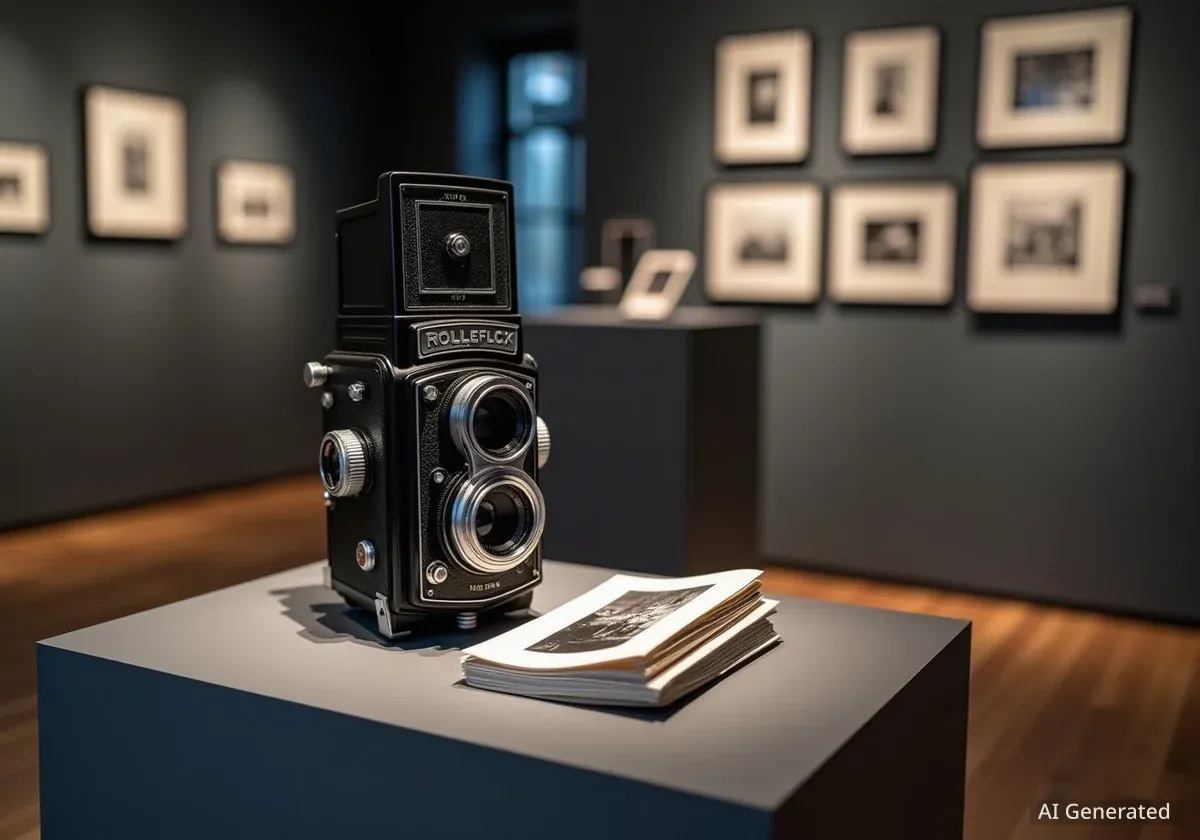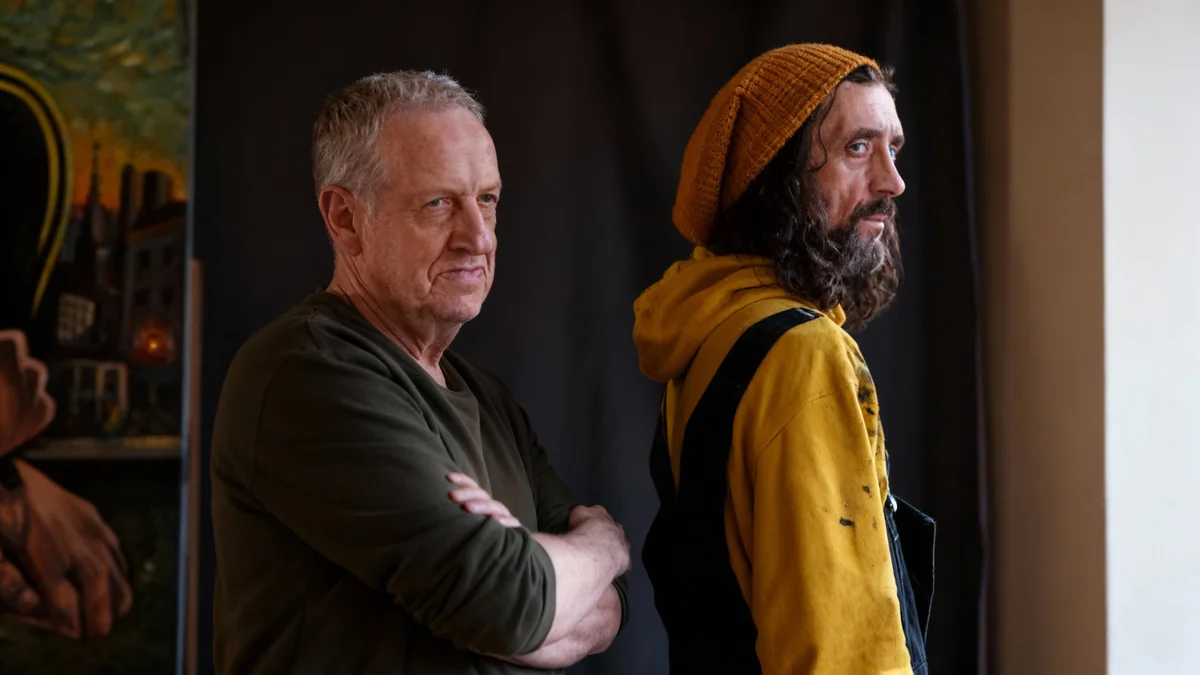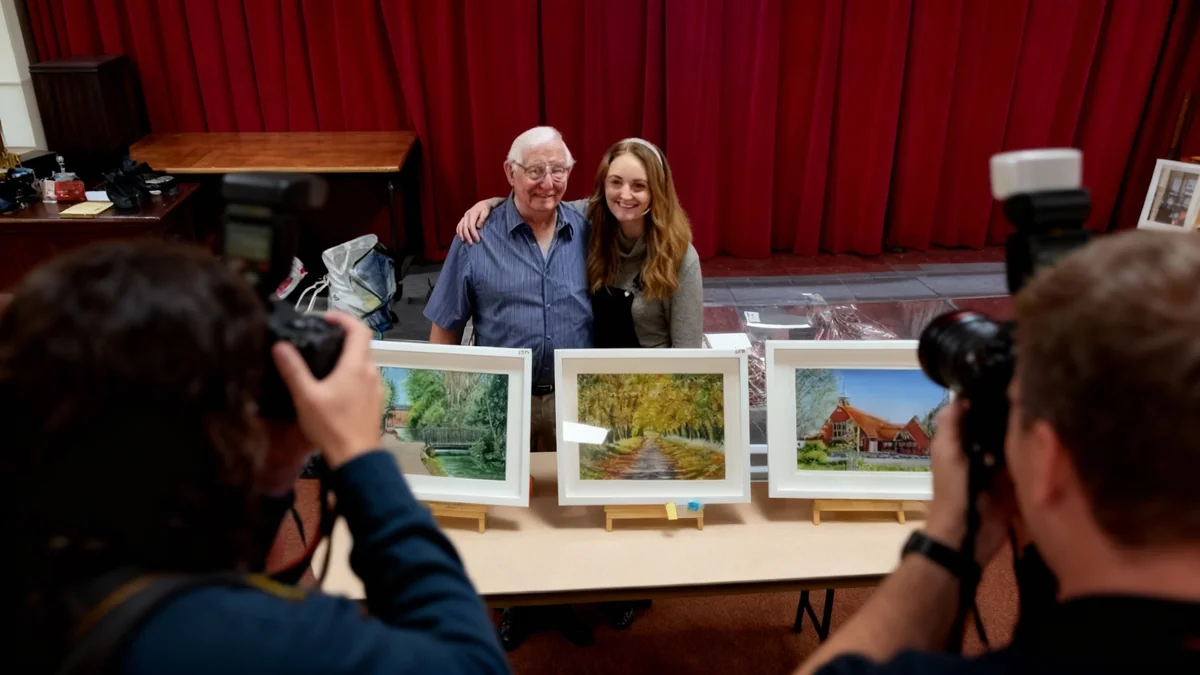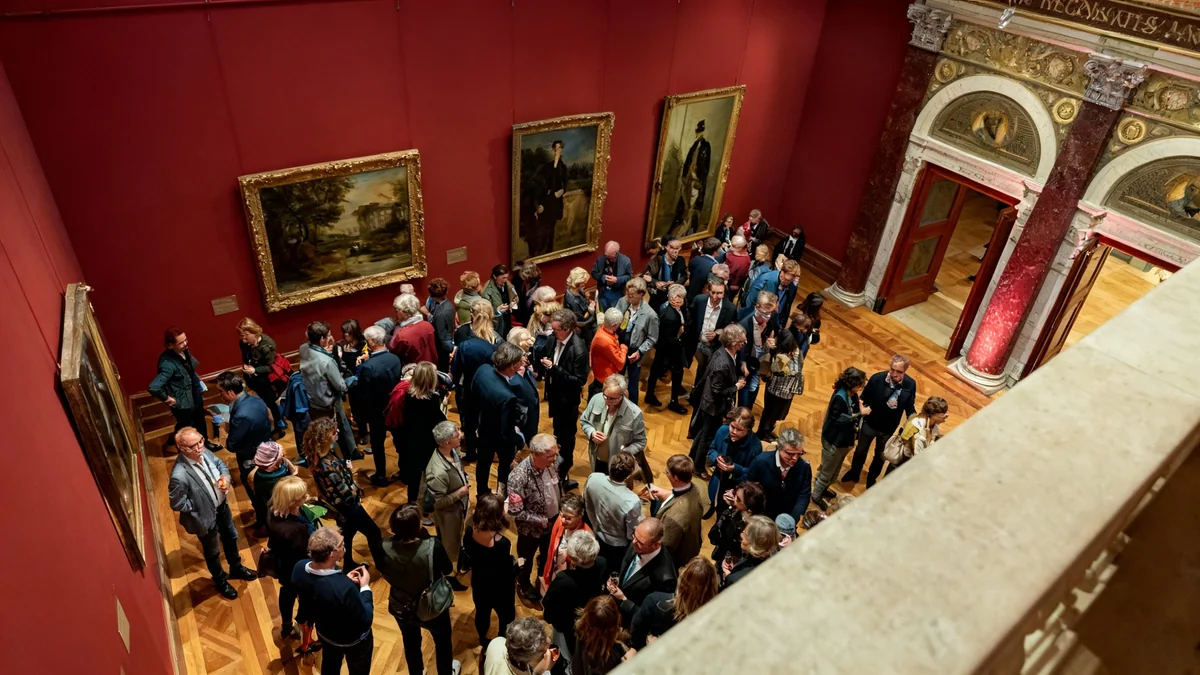A major exhibition celebrating the life and work of photographer Lee Miller will open at Tate Britain. This retrospective will trace Miller's journey from a prominent fashion model to a pioneering surrealist artist and a fearless war correspondent. The exhibition, the largest of its kind in the UK, offers a comprehensive look at her diverse career and artistic vision.
Key Takeaways
- Tate Britain hosts the UK's largest Lee Miller retrospective.
- The exhibition covers her career from modeling to surrealism and war photography.
- It features approximately 250 prints, including previously unseen works.
- Miller was one of the few accredited female war correspondents during World War II.
- Her work includes collaborations with Man Ray and pioneering solarisation techniques.
Lee Miller's Early Life and Transition to Photography
Lee Miller was born in Poughkeepsie, New York State, in 1907. Her early studies focused on painting and stage design. However, her experience as a highly sought-after model in the late 1920s sparked her interest in photography. During this period, acclaimed photographers like Cecil Beaton and Edward Steichen captured her image.
In 1929, Miller moved to Paris, a pivotal moment in her career. It was there that she transitioned from being in front of the camera to working behind the lens. This move marked the beginning of her significant contributions to the art world.
Fact: Solarisation Discovery
Lee Miller and artist Man Ray are credited with rediscovering and perfecting the photographic technique of solarisation. This process involves exposing a developing print to light, creating a distinctive halo effect around subjects. Miller later applied this technique to fashion photography for British Vogue.
Parisian Avant-Garde and Surrealist Explorations
In Paris, Miller's creative journey accelerated. She began working with the renowned surrealist artist Man Ray. Their collaboration was a period of intense artistic exchange, blending surrealist concepts with technical photographic experiments. By the early 1930s, Miller was deeply integrated into the Parisian avant-garde scene.
Her work from this time often focused on finding the surreal in everyday urban life. One early photograph shows a web of semi-congealed tar on a pavement, moving towards a pair of anonymous feet. Miller saw this spilled tar as a cape, a dress, or even a manta ray, demonstrating her unique perspective.
“It was a matter of getting out on a damn limb and sawing it off behind you.”
— Lee Miller, on forging her own path
Wartime London and Photojournalism
In 1939, as World War II began, Lee Miller moved to London. She quickly established herself as a leading fashion photographer for British Vogue. The exhibition highlights her innovative work produced during the Blitz, showcasing the city's resilience and absurdity under wartime conditions.
Images like You Will Not Lunch in Charlotte Street Today (1940) and Fire Masks (1941) capture the emotional and unusual aspects of wartime London. Miller's work during this era went beyond fashion. She became one of the few accredited female war correspondents, documenting not only women's roles on the home front but also the harsh realities of the front lines.
Historical Context: Women War Correspondents
During World War II, very few women were accredited as war correspondents. Lee Miller's role was significant, allowing her to capture unique perspectives of the conflict. Her photographs provided a rare glimpse into the experiences of both civilians and soldiers.
Documenting Destruction and Resilience
Her photograph of a Remington Silent typewriter (1940) is a powerful example of her war photography. The quietness of the typewriter, once its defining feature, was rendered silent by bombs. Miller used this image to make an eloquent statement about the destruction of war. This photograph was published in the 1941 book Grim Glory - Pictures of Britain Under Fire.
Egyptian Landscapes and Middle Eastern Travels
Before the war, Miller's photographic explorations took her to Egypt. She moved to Cairo in 1934 and continued to use her camera as a tool for discovery. Her images from this period are characterized by a sense of freedom, unburdened by commercial demands. She photographed subjects that genuinely interested her.
One notable work from this time is Portrait of Space, Al Bulyaweb near Siwa, Egypt (1937). This photograph serves as a metaphor for freedom, featuring a torn flyscreen framing a path to distant hills. The hills themselves resemble watchful eyes, with a bird-shaped cloud flying freely above. This image proved inspirational, with René Magritte later incorporating the shape of the torn flyscreen in his painting Le Baiser.
Miller's travels extended beyond Egypt. She captured scenes across rural Syria and Romania in the late 1930s. Some of these images, depicting places like northern Syria near the Turkish border, have never been publicly exhibited before this retrospective.
Exhibition Details and Legacy
The Tate Britain exhibition, titled 'Lee Miller,' will run from October 2, 2025, to February 15, 2026. It features approximately 250 vintage and modern prints. Many of these works have not been displayed previously. The exhibition also includes unseen archival materials and ephemera, offering deeper insight into Miller's artistic legacy.
Visitors will see lesser-known aspects of her practice, such as her remarkable images of the Egyptian landscape from the 1930s. The exhibition also explores her artistic collaborations, including extracts from Jean Cocteau’s groundbreaking 1930 surrealist film Le Sang d’un Poète, in which Miller starred.
- Exhibition Dates: October 2, 2025 – February 15, 2026
- Location: Tate Britain, London
- Number of Prints: Approximately 250 (vintage and modern)
- Special Features: Unseen archival material, film extracts, focus on diverse periods
Lee Miller's career highlights her fearless spirit and poetic vision. Her ability to navigate different photographic genres, from fashion to surrealism and war reporting, established her as one of the most important voices in 20th-century art. The Tate Britain retrospective aims to underscore her enduring impact and the breadth of her groundbreaking work.




